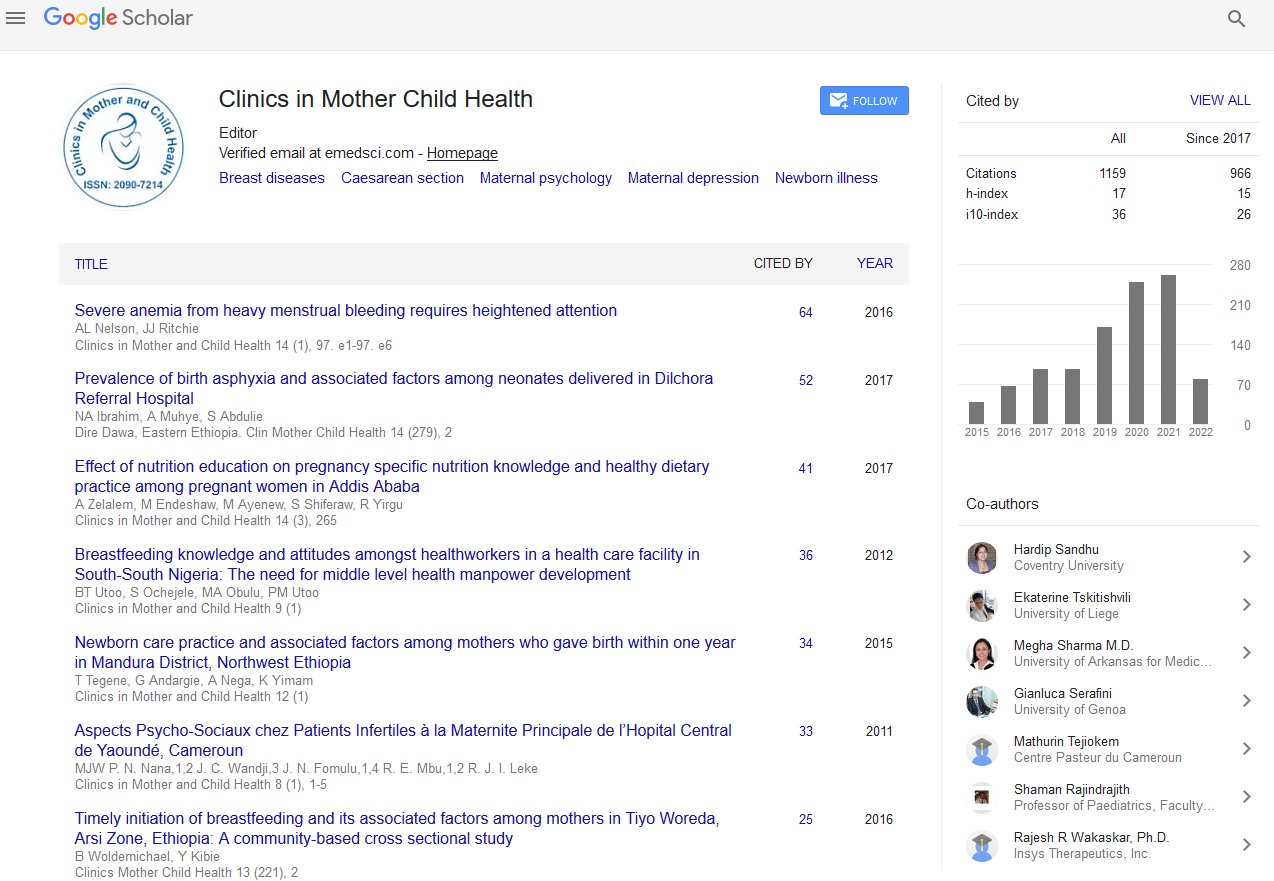Indexed In
- Genamics JournalSeek
- RefSeek
- Hamdard University
- EBSCO A-Z
- Publons
- Geneva Foundation for Medical Education and Research
- Euro Pub
- Google Scholar
Useful Links
Share This Page
Journal Flyer

Open Access Journals
- Agri and Aquaculture
- Biochemistry
- Bioinformatics & Systems Biology
- Business & Management
- Chemistry
- Clinical Sciences
- Engineering
- Food & Nutrition
- General Science
- Genetics & Molecular Biology
- Immunology & Microbiology
- Medical Sciences
- Neuroscience & Psychology
- Nursing & Health Care
- Pharmaceutical Sciences
Abstract
Pattern, Causes and Treatment Outcomes of Neonatal Admission in the Tamale Teaching Hospital
Walana W, Acquah Ekuban KS, Abdul-Mumin A, Naafu B, Aruk E, Vicar Kofi E, Kampo S and Ziem Benogle J
Background: The burden of neonatal morbidity and mortality remains a major health challenge, and contributes hugely to deaths among children under five years old, especially in developing countries.
Objective: This study established the pattern, causes and treatment outcomes of admitted babies at the neonatal intensive care unit of the Tamale Teaching Hospital.
Method: A retrospective health facility based study was conducted by reviewing available data covering the period January 2013 to December 2015.
Results: A total of 4409 cases were reviewed out of which demographic data were complete for 3973 cases. Males were dominant 54.0% (2146) compared to females 46.0% (1827). Admissions were significantly common (χ2=457.3, P<0.001) among neonates ≤ 2 days old 62.0% (2947). The commonest cause of neonatal admission was sepsis (29.2%), followed by prematurity/low birth weight (26.9%), birth asphyxia (16.2%) and congenital anomalies (7.1%). Majority 82.7% (3220) of the neonates were successfully treated and discharged. However, 16.0% (621) of the neonates expired before or during treatment, while 1.1% (42) were transferred and 0.3% (10) absconded. Neonatal deaths were commonly associated with prematurity/low birth weight (44.8%), birth asphyxia (24.6%), neonatal sepsis (13.5%), and congenital anomalies (6.8%).
Conclusion: The relatively high number of neonatal cases coupled with the mortality rate observed requires a holistic approach to pregnancy care from conception to delivery, aimed at reducing neonatal morbidity and mortality.


